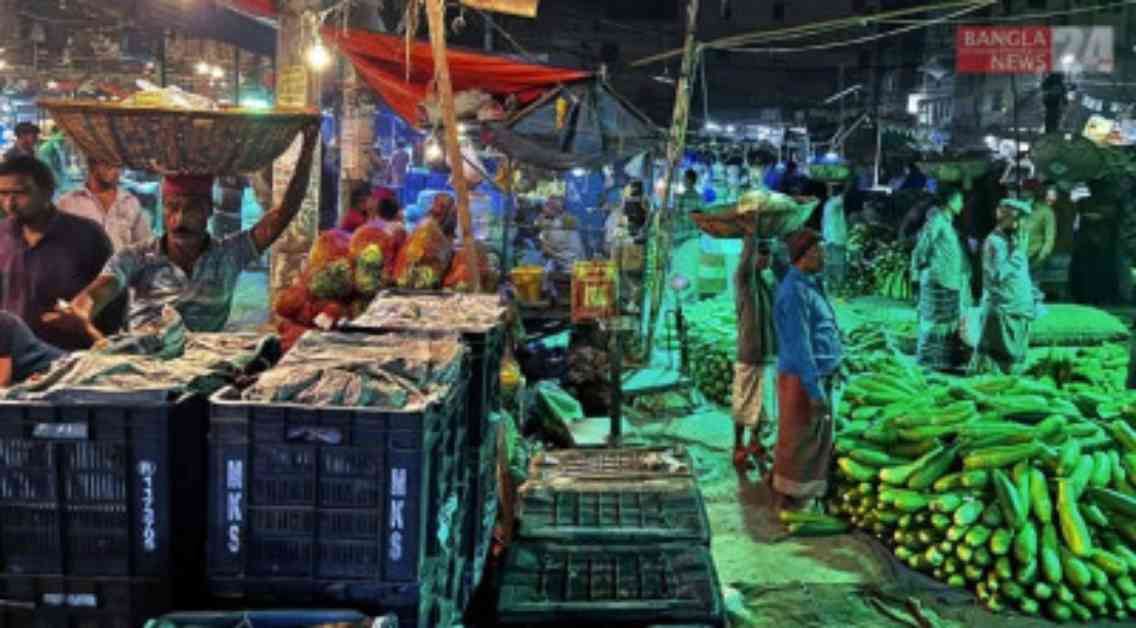Market Prices Stable Amidst Mid-Ramadan, Reduced Costs
As mid-Ramadan approaches, the capital city’s markets have witnessed a slight decrease in the prices of daily essentials. From rice to soybean and all other goods, prices have seen a decline, compared to the beginning of the Ramadan month.
On Tuesday (March 18th), a visit to the Mirpur 10, Mirpur 13, Mirpur 2, Mohammadpur, and Farmgate markets in the capital painted a picture of abundance. The price of machine-fried muri stands at 90 taka per kilogram, a slight drop from the 100 taka per kilogram rate at the start of the month. Hand-fried muri is selling at 150 taka per kilogram, the same price as various packaged varieties from different companies.
Witness Accounts and Expert Commentary
Traders explain that there has been an increase in the supply of goods in the market. However, the reduced demand from the beginning of Ramadan has caused a decrease in the prices of most products. The majority of items are now priced lower due to the decreased demand compared to the initial days of the holy month.
Expert Insights and Analysis
In a bid to maintain market stability during Ramadan, the National Board of Revenue has reduced tariffs and taxes on essential items such as edible oils, sugar, potatoes, eggs, onions, rice, dates, and fresh fruits. This comprehensive tax reduction aims to keep product prices stable throughout the month, ensuring that the impact of the reduced tariffs translates into affordable prices for consumers.
Moreover, a visit to the Mirpur-11 and Kochukhet wholesale markets, two prominent hubs in the capital, revealed that there is adequate supply of all products with stable prices. In fact, some items have even seen a decrease in prices, signaling a market that is well-equipped to meet the demands of consumers during the crucial period of Ramadan.
As the sun sets and the call for iftar echoes through the streets, the demand for brinjals has surged, leading to an increase in prices. Long brinjals are now selling at 80 taka per kilogram, with some markets offering a discount of 5 to 10 taka per kilogram compared to the initial days of Ramadan.
The overall market situation indicates a delicate balance between supply and demand, with the government’s strategic tax reductions playing a significant role in maintaining price stability amidst the religious observance of Ramadan. As consumers navigate the bustling markets during this holy month, the efforts to regulate prices and ensure adequate supply reflect a commitment to a harmonious shopping experience for all.
As the clock ticks away, the markets remain a hub of activity, with prices fluctuating in response to the ebb and flow of consumer demand. The voices of traders and the expert analysis shed light on the intricate dance between supply and demand, creating a dynamic marketplace that adapts to the needs of the people.
The vibrant tapestry of the market, woven with threads of affordability and accessibility, paints a picture of a community coming together to celebrate Ramadan with full bellies and joyful hearts. As the prices shift and the goods exchange hands, the spirit of the season permeates through the bustling aisles, connecting individuals in a shared journey of sustenance and solidarity.
The clock reads 19:32, March 18, 2025, in Bangladesh local time, marking another day in the vibrant tapestry of the mid-Ramadan market scene.
























